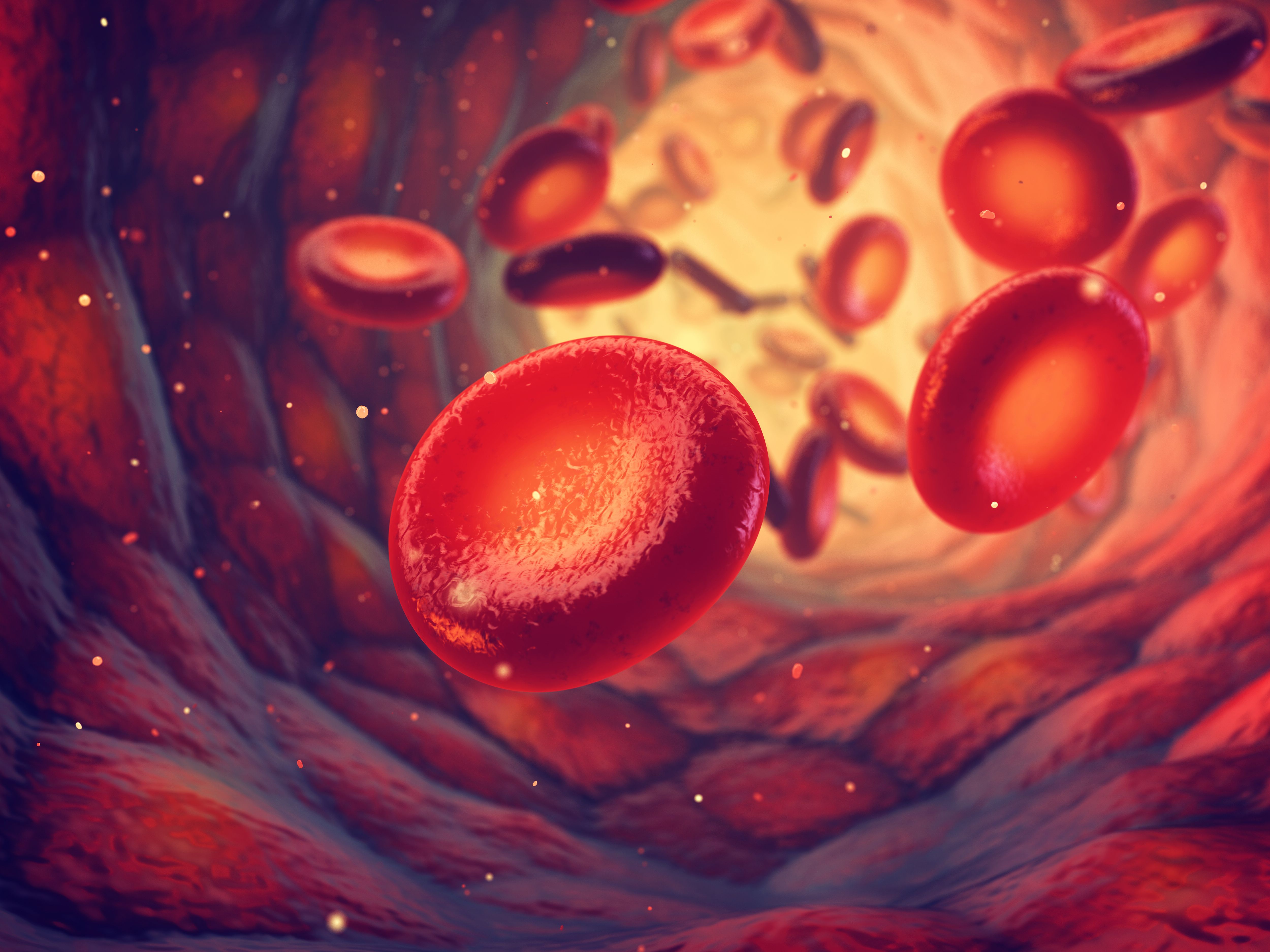Belantamab Mafodotin Combo Shows PFS Improvement in R/R Multiple Myeloma
Triplet therapies containing belantamab mafodotin may fulfill an unmet need for patients with multiple myeloma following the first relapse.
Triplet therapies containing belantamab mafodotin may fulfill an unmet need for patients with multiple myeloma following the first relapse.

Combining belantamab mafodotin-blmf (Blenrep) with pomalidomide (Pomalyst) and dexamethasone (BPd) conferred a significant progression-free survival (PFS) improvement compared with bortezomib (Velcade) plus pomalidomide/dexamethasone (PVd) in those with relapsed/refractory multiple myeloma, according to data from the phase 3 DREAMM-8 study (NCT04484623) presented in a press briefing at the 2024 American Society of Clinical Oncology (ASCO) Annual Meeting.
The median PFS was not reached (NR; 95% CI, 20.6 months to NR) in the BPd arm compared with 12.7 months (95% CI, 9.1-18.5) in the PVd arm (HR, 0.52; 95% CI, 0.37-0.73; P <.001). At 12 months, the PFS rate was 71% and 51% in each respective arm. Findings also highlighted that treatment with BPd reduced the risk of progression or death in difficult-to-treat subgroups, which included patients with cytogenic or functional high-risk disease, refractory disease following lenalidomide (Revlimid), and previous treatment with anti-CD38 therapy.
The overall response rate (ORR) with BPd was 77% (95% CI, 70.0%-83.7%) vs 72% (95% CI, 64.1%-79.2%) with PVd, with complete responses (CRs) reported in 40% (95% CI, 32.2%-48.2%) and 16% (95% CI, 10.7%-23.3%) of patients, respectively. In each respective arm, minimal residual disease (MRD) negativity was observed in 23.9% (95% CI, 17.4%-31.4%) and 4.8% (95% CI, 1.9%-9.6%) of those with a CR or stringent CR and in 32.3% (95% CI, 25.0%-40.2%) and 5.4% (95% CI, 2.4%-10.4%) of patients with a CR, stringent CR, or very good partial response (VGPR). Additionally, the median duration of response (DOR) was NR (95% CI, 24.9 months to NR) vs 17.5 months (95% CI, 12.1-26.4), respectively.
Data showed a median PFS2 of NR (95% CI, 33.0 months to NR) in the BPd arm vs 22.4 months (95% CI, 13.8-NR) in the PVd arm (HR, 0.61; 95% CI, 0.43-0.86). The median overall survival (OS) was NR with both the belantamab mafodotin triplet (95% CI, 33.0 months to NR) and bortezomib-based therapy (95% CI, 25.2 months to NR; HR, 0.77; 95% CI, 0.53-1.15; P = .095). Investigators will continue to follow up with patients for additional OS data for future pre-specified analyses.
“Taken together with the results of phase 3 DREAMM-7 [NCT04246047], which combined [belantamab mafodotin] with bortezomib and dexamethasone, these data highlight the potential of [belantamab mafodotin]-containing triplets to address an unmet need for novel regimens to treat patients with myeloma and first relapse,” study investigator Suzanne Trudel, MSc, MD, a clinician scientist at Princess Margaret Cancer Centre, said in the presentation.
In the international, open-label, phase 3 DREAMM-8 trial, 302 patients were randomly assigned to receive treatment in the BPd arm (n = 155) or the PVd arm (n = 147). Treatment in the BPd arm included belantamab mafodotin at 2.5 mg/kg intravenously in cycle 1 then 1.9 mg/kg every 4 weeks starting on cycle 2, pomalidomide at 4 mg orally on days 1 to 21, and dexamethasone at 40 mg on days 1, 8, 15, and 22. Patients in the comparator arm received bortezomib at 1.3 mg/m2 subcutaneously on days 1, 4, 8, and 11 of cycles 1 to 8 followed by days 1 and 8 of each subsequent cycle; pomalidomide at 4 mg orally on days 1 to 14; and dexamethasone at 20 mg on the day of, and after bortezomib.
The trial’s primary end point was PFS per independent review committee assessment. Secondary end points included OS, MRD negativity, DOR, ORR, CR rate, time to response, time to progression, PFS2, adverse effects (AEs), and ocular findings.
Adult patients with multiple myeloma who received at least 1 prior line of therapy containing lenalidomide were eligible for enrollment on the trial. Other requirements for study entry included having progressive disease during or following the most recent line of treatment and no prior therapy with anti-BCMA agents or pomalidomide.
Any-grade AEs affected more than 99% of patients in the BPd arm and 96% of those in the PVd arm, with 91% and 73% experiencing grade 3/4 toxicity in each respective arm. Following AEs, 91% and 75% of patients had dose interruptions or delays, 61% and 61% had dose reductions, and 15% and 12% had permanent treatment discontinuation. Fatal serious AEs were reported in 11% of patients in each treatment arm.
Of note, ocular events were manageable with dose delays and reductions, and 9% of those in the BPd arm discontinued treatment due to occurring events.
Reference
Trudel S, Beksac M, Pour L, et al. Results from the randomized phase 3 DREAMM-8 study of belantamab mafodotin plus pomalidomide and dexamethasone (BPd) vs pomalidomide plus bortezomib and dexamethasone (PVd) in relapsed/refractory multiple myeloma (RRMM). J Clin Oncol. 2024;(suppl 17):LBA105.
Newsletter
Stay up to date on recent advances in the multidisciplinary approach to cancer.